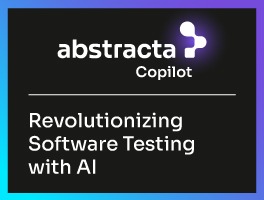Need to choose between Playwright vs Selenium? We compare execution speed, language coverage, MCP, and enterprise scalability—and show when using expert support can make the difference.


As quality engineers working with mission-critical systems, we often get asked: Should we use Playwright or Selenium for end-to-end testing? The answer, as usual, depends on context.
In the browser automation space, Playwright vs Selenium is one of the most common debates among test engineers. Being a company with nearly 2 decades of experience in automation testing for mobile and web apps, we’ve seen both tools succeed and fail in different contexts.
While Playwright is a framework and Selenium is a library, both aim to automate testing. Comparing them is a valuable step before choosing one for your project—especially now that new capabilities such as MCP integration and AI-driven workflows are shaping the future of enterprise test automation.
In this article, we walk through the key differences between Playwright and Selenium, how they perform in real-world conditions, and what we’ve learned from guiding teams in complex, highly regulated environments.
Flaky tests? Slow feedback? Endless maintenance?
Our test automation services bring focus, speed, and smarter QA with AI in the mix.
BOOK A MEETING
A Quick Overview of Playwright vs Selenium
Playwright and Selenium are two of the most widely used test automation tools for web browser automation. Both enable automated interaction with web applications to simulate real user behavior.
Selenium is a mature browser automation framework that supports multiple programming languages and web browsers. It includes components such as Selenium WebDriver, Selenium Grid, and Selenium IDE. Selenium remains the go-to tool for organizations with complex test infrastructure, broad language support, and legacy systems.
Playwright is a modern test automation framework developed by Microsoft. It supports Chromium, Firefox, and WebKit browser engines with built-in browser binaries and a fast, developer-friendly API. Its support for parallel test execution, headless testing, and mobile device emulation makes it well-suited for high-velocity teams.
Key Differences between Playwright and Selenium
- Adoption trend: Playwright is one of the fastest-growing test automation tools. Its adoption has grown steadily due to its developer-friendly API and fast setup.
- Community maturity: Selenium has the largest and most mature community in the browser automation space. It offers extensive community support, integrations, and documentation.
- Communication model: Selenium uses the JSON Wire Protocol to communicate between test scripts and browsers. Playwright uses the Chrome DevTools Protocol, which offers faster and more reliable browser interactions.
- Browser support: Selenium supports multiple browsers via external drivers and Selenium Grid. Playwright includes built-in support for Chromium, Firefox, and WebKit, simplifying cross-browser testing.
- Parallel execution: Playwright supports parallel execution by default using multiple browser contexts. Selenium requires a custom setup using Selenium Grid and multiple machines.
- Test runner and tooling: Playwright includes a built-in test runner with advanced features like a trace viewer and auto-waiting. Selenium depends on external frameworks for test execution and debugging.
- Programming languages: Selenium supports multiple programming languages, including Java, Python, C#, Ruby, and JavaScript. Playwright supports JavaScript, TypeScript, Python, C#, and Java.
- Enterprise compatibility: Selenium is widely used in enterprise environments with complex test infrastructure. It integrates well with legacy systems and long-established CI/CD pipelines.
- Modern testing features: Playwright provides native support for mobile device emulation, headless mode, and advanced user actions. These features improve testing speed and accuracy in modern web applications.
- Evolution and future readiness: Selenium is evolving with WebDriver BiDi, a bidirectional protocol that improves real-time browser control. This positions Selenium to remain relevant in modern testing workflows.
Comparative Table: Playwright vs Selenium
| Feature | Selenium | Playwright |
|---|---|---|
| Type of testing | UI testing for the web (front-end) | UI testing for the web (front-end) |
| Supported languages | Java, Python, Ruby, JavaScript, C#, among others | JavaScript/TypeScript, Python, Java, .NET |
| Browser compatibility | Supports Chrome, Firefox, Safari, Edge, IE | Supports Chromium, Firefox, WebKit (Safari) |
| Execution speed | Slower due to its remote architecture | Very fast, runs directly within the browser |
| Ease of configuration | Requires more setup, especially with Selenium Grid | Relatively easy, though it may require more setup than Cypress |
| Multi-browser support | Extensive, supports multiple browsers | Extended, including WebKit (Safari) |
| Debugging capabilities | More complex debugging depends on external tools | Integrated debugging with the ability to record videos and screenshots |
| Parallel automation | Supported through Selenium Grid | Supports parallel test execution |
| Community and ecosystem | Established and extensive, with many plugins and resources | Growing community, though smaller compared to Cypress and Selenium |
| Recommended use cases | Projects requiring cross-browser support and multiple languages | Projects needing speed, multi-browser support, and realistic testing |
| Communication protocol | Uses JSON Wire Protocol; evolving toward WebDriver BiDi | Uses Chrome DevTools Protocol for fast, low-level browser control |
| Built-in test runner and tooling | Depends on external frameworks (e.g., JUnit, TestNG) | Includes native test runner, trace viewer, and built-in debugging tools |
| Support for multiple browser contexts | Requires separate browser instances for isolated sessions | Supports multiple browser contexts within a single browser instance |
| Headless mode and mobile emulation | Supports headless mode with configuration; limited native emulation | Built-in support for headless mode and mobile device emulation |
| AI Agent Integration (MCP) | Supported via community implementation of Model Context Protocol (MCP) for AI-based browser control. | Supported via official Playwright MCP for structured browser control by LLMs and other AI agents. |
| Support for parallel test execution | Achieved through Selenium Grid and distributed infrastructure | Natively supported thanks to the browser context model, enabling parallel execution in a single process |
Already working with one of these tools?
Our Test Automation Services help teams move faster—with smarter automation.
Book a free consultation
Beyond the Basics: Playwright vs Selenium
Browser Support
Browser support is fundamental to any test automation framework. Both Selenium and Playwright support multiple browsers, including Chromium, Firefox, and WebKit. However, the approach differs.
Selenium requires setting up Selenium WebDriver binaries or using Selenium Grid across multiple machines. This can increase setup time, but gives flexibility, especially when testing across multiple operating systems or using remote servers.
Playwright, in contrast, provides built-in support for browsers with bundled binaries. This simplifies the setup and improves consistency across environments. We’ve seen this accelerate onboarding and reduce environment-related test execution issues in several of our projects.
Multiple Tabs and Windows
Handling multiple tabs or multiple windows is a common challenge in web browser automation.
Selenium can manage multiple browser windows through window handles, but it often requires careful coordination in test scripts, especially when tests fail unexpectedly due to lost focus or timing issues.
Playwright offers a more structured API with isolated browser contexts, which makes it easier to work with multiple browser contexts and simulate real user behavior involving multiple tabs.
This isolation also supports headless testing more reliably, helping us build stable tests in our automated testing pipelines.
End-to-End Testing
We often use both tools for end-to-end testing of web apps, depending on client needs.
Selenium supports a wider range of major programming languages, making it a solid choice for teams with broad language support requirements.
On the other hand, Playwright’s support for headless browsers, native mobile emulation, and the Chrome DevTools Protocol provides flexibility for testing features like mobile device emulation or user agent overrides—key in performance testing and simulating diverse user conditions.
We’ve used both tools for web application testing involving authentication flows, payment gateways, and accessibility validations, often switching tools depending on the stage of the testing process.
Browser Contexts
One of Playwright’s strongest key features is the concept of browser contexts. These allow multiple isolated sessions in a single browser instance, enabling efficient parallel testing and reducing memory usage.
This is especially useful for teams running large test suites or testing role-based flows within the same application.
Selenium does not support this natively. You’d typically rely on multiple browser instances, increasing the demand on your test infrastructure.
Community Support and Ecosystem
Selenium’s community support is vast, with a rich ecosystem of plugins, tutorials, and integrations. Tools like Selenium IDE serve as an integrated development environment to simplify writing code for test beginners.
The playwright’s community is smaller but growing quickly. It ships with a native test runner, supports parallel test execution by default, and offers features like a trace viewer and built-in debugging tools—streamlining the testing framework for fast iterations.
Scaling Parallel Tests
Parallel execution is key for fast, scalable test automation. Both Playwright and Selenium offer solutions, but the approach and impact differ significantly.
Selenium Grid enables distributed test execution across multiple machines and browsers. It’s well-suited for enterprise environments where infrastructure is already in place and flexibility across operating systems is needed. However, it often requires more configuration and maintenance.
Playwright simplifies advanced parallelization through its native support for multiple browser contexts, allowing concurrent execution in a single process.
The result: faster feedback loops, smoother CI/CD integration, and more stable execution in modern pipelines.
At Abstracta, we’ve seen strong results leveraging Playwright’s native parallel capabilities in high-load scenarios, particularly when testing apps with multiple user roles or concurrent sessions.
If you’re scaling your automation, evaluating how each framework handles parallelism can make a major difference in efficiency and maintainability.
Selenium MCP Vs Playwright MCP
The main difference between Selenium MCP and Playwright MCP is how each integrates the protocol: Playwright has official support, while Selenium relies on a community project.
Playwright is evolving to support AI-native testing workflows. Through Playwright MCP (Model Context Protocol), large language models (LLMs) and other AI agents can control the browser using structured snapshots of accessibility and DOM data—rather than relying on pixel-based input or traditional scripting.
This opens up promising use cases for AI-assisted exploratory testing, automatic test generation, and accessibility validation, especially when paired with tools like GitHub Copilot, Claude, or custom LLM-powered agents used in environments like Cursor or open-source initiatives such as AutoPlaywright.
Selenium also supports MCP through a community-led project, mcp-selenium, which allows AI agents to control Selenium WebDriver using structured commands. While not part of the official Selenium core, it enables similar use cases—like autonomous navigation, input simulation, and visual validation—bridging traditional automation with AI workflows.
Choosing Between Selenium MCP and Playwright MCP
For regulated environments or large enterprises, Playwright MCP is often the preferred choice due to its official Microsoft support, enhanced security, and readiness for AI-native testing. For teams seeking flexibility and community-driven customization at scale, Selenium MCP remains a strong option to experiment and evolve with minimal constraints.
We’ve worked with both approaches in mission-critical systems, from financial platforms to healthcare apps, helping teams move from proof-of-concept AI agents to production-ready automation.
At Abstracta, we help teams evaluate and implement both Selenium MCP and Playwright MCP to build reliable, AI-driven test automation strategies. Talk to our experts.
Code Examples
Playwright (JavaScript)
loginPage.js (Page Object)
As we’ve discussed, Playwright provides full control over the browser context, including multiple tabs, geolocation, and permissions. Its asynchronous model and built-in auto-waiting system make it robust against race conditions. This example encapsulates all logic in a reusable class and uses Playwright’s expect to verify successful navigation after login.
login.spec.js (Test)
Selenium (Java)
LoginPage.java (Page Object)
In the case of Selenium, it uses WebDriver as an abstraction layer between the test and the browser. The LoginPage class abstracts interactions with HTML elements, while the test orchestrates the flow.
LoginTest.java (Test)
We recommend watching Diego Molina’s talk at QSConf 2024.
The Real Question: Which Tool Fits Your Workflow?


Choosing between Selenium and Playwright shouldn’t come down to popularity or novelty alone. The decision requires a thoughtful assessment of the project’s context, the available tech stack, and the team’s priorities.
If you’re working on legacy systems, need broad language support, or operate in complex enterprise environments with distributed test infrastructure, Selenium remains a reliable and scalable solution. It is a mature, dependable tool that continues to serve teams needing flexibility and wide technology coverage.
If you’re focused on modern web applications, need fast and stable test feedback, or want a streamlined setup for cross-browser testing, Playwright offers strong advantages—particularly in terms of execution speed, parallel testing, and developer experience. It also supports multi-context testing and includes tools for automatic script generation, making it ideal for scalable and realistic testing workflows.
There’s no one-size-fits-all solution. The key is identifying which tool (Playwright vs Selenium) aligns best with your team’s workflow, product architecture, and long-term automation goals.
FAQs about Playwright vs Selenium


Is Selenium Better Than Playwright?
Whether Selenium is better than Playwright depends on the project context and testing needs. Selenium integrates smoothly with legacy systems, multiple languages, and complex infrastructures, while Playwright simplifies test code with faster execution, built-in features, and modern architecture. Each tool excels under different conditions.
Is The Playwright Overtaking Selenium?
Playwright is overtaking Selenium in adoption among fast-moving frontend teams thanks to speed, native parallelism, and developer-friendly tooling. Selenium remains dominant in enterprise environments due to stability, broad integrations, and a mature ecosystem.
What Are The Drawbacks Of A Playwright?
The drawbacks of Playwright include a smaller community compared to Selenium. It also depends on its own test runner, which might require teams to adapt workflows. There can be a learning curve for teams unfamiliar with async programming models.
Can I Use Selenium And Playwright Together?
Selenium and Playwright can be used together in one project, but it requires careful management. They don’t share the same drivers or architecture, so integration may increase complexity. It’s more common to use one or the other based on specific test requirements.
Does Playwright Require Selenium?
Playwright does not require Selenium because it uses its own browser drivers instead of depending on Selenium WebDriver. Selenium remains widely adopted in enterprise setups, while Playwright’s native approach simplifies configuration and improves test execution speed.
Is Playwright the Future?
Playwright is often viewed as part of the future of modern web app testing thanks to its parallelization, architecture, and developer-friendly tooling. Selenium is also evolving with WebDriver BiDi, which strengthens its role in long-term enterprise software testing strategies.
Is Playwright Good for UI Testing?
Playwright is effective for UI testing with extensive browser support, integrated debugging, and consistent element handling. Selenium offers broader coverage of programming languages, while Playwright emphasizes speed and simplicity when teams run tests across complex user flows.
Is Playwright for Frontend or Backend?
Playwright is primarily used for frontend testing by simulating user interactions in browsers. Similar to Selenium, its main focus is UI automation, though Playwright also supports backend-oriented workflows like browser extension and API-linked test cases.
How Do Playwright and Selenium Support MCP Integration?
Playwright and Selenium support MCP integration differently, with Playwright offering official implementation and Selenium relying on community-led projects. At Abstracta, we build and implement MCP-based testing strategies that leverage AI agents to strengthen enterprise automation.
How Do Playwright and Selenium Handle Cross-Browser Testing?
Playwright and Selenium handle cross-browser testing differently, with Selenium using external browser drivers and Grid while Playwright provides built-in binaries. Selenium offers flexibility across operating systems, while Playwright simplifies configuration and consistency.
How We Can Help You


With nearly 2 decades of experience and a global presence, Abstracta is a leading technology solutions company with offices in the United States, Chile, Colombia, and Uruguay. We specialize in AI-driven solutions and end-to-end software testing services.
Our expertise spans across industries. We believe that actively bonding ties propels us further. That’s why we’ve forged robust partnerships with industry leaders like Microsoft, Datadog, Tricentis, Perforce BlazeMeter, Saucelabs, and PractiTest, empowering us to incorporate cutting-edge technologies. technologies.
Embrace agility and cost-effectiveness through our Test Automation Services.
Contact us to discuss how we can help you grow your business.


Follow us on Linkedin & X to be part of our community!
Recommended for You
Can Auto Playwright Boost Testing with AI?
Tags In
Related Posts
How to Avoid False Positives and False Negatives in Test Automation
Make sure you can trust the results of your test automation When dealing with automation, one of its most delicate subjects is the results that lie, otherwise known as false positives and false negatives. Those who have already automated know this to be an issue…
Quality Sense Podcast: Matias Fornara- Test Automation
Welcome to another episode of the Quality Sense podcast! For today’s episode, I had a very interesting conversation with Matias Fornara, he’s a Senior Leader at Abstracta and we’ve been working together for more than 10 years. We discussed everything Test Automation, how to ensure…
Search
Contents
Categories
- Acceptance testing
- Accessibility Testing
- AI
- API Testing
- Development
- DevOps
- Fintech
- Functional Software Testing
- Healthtech
- Mobile Testing
- Observability Testing
- Partners
- Performance Testing
- Press
- Quallity Engineering
- Security Testing
- Software Quality
- Software Testing
- Test Automation
- Testing Strategy
- Testing Tools
- Work Culture





